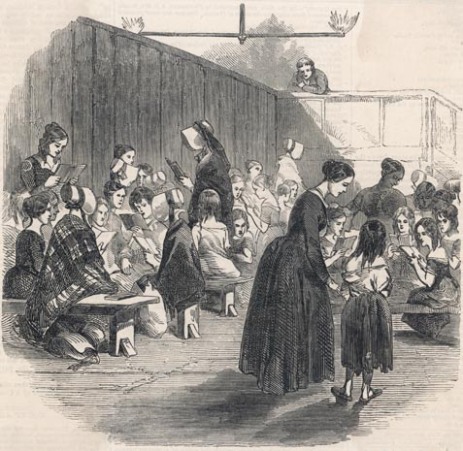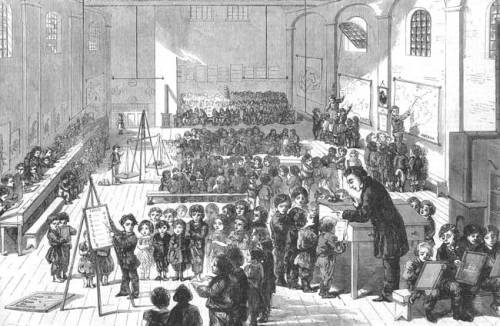
The British education system has undergone drastic changes over the years and for the lovers of history, there is a lot of information about Victorian school days. The reign of Queen Victoria saw many transformations in the educational sector, most of which were backed by legislations enacted by parliament. Great Britain increasingly became a force to be reckoned with in a quickly industrializing world. This fueled the need for universal or mass education. However, there was a part of British society (especially the rich) who feared losing labour should kids from poor homes be given access to education.
What transpired in Victorian days of schooling?
It should be noted that in the 19th century, school attendance wasn’t compulsory, especially for girls from poor homes. Parents could send them to go work in farms to raise money to cover household expenses. Children from richer households often made use of a tutor.
Over time, and especially in the year 1839, education system was subjected to gradual changes. A new approach to rolling out universal education was adopted. Its major aim was to review progress of each and every new establishment in the education sector. But still, parents who lived around cities viewed education as expensive and were therefore reluctant to send their children to school. Another reason why school attendance was low was that the children’s money earned by working in factories and on farms was needed to support the family.
How was this to change with the introduction of ragged schools?

To get more children accommodated in the Victorian education days, the idea of ragged schools was conceived in the years of 1840s. This was fundamentally premised on establishing schools that would be led by volunteers. This later spread into the city of London, thus coming as a relief to families whose children were being turned away from charity-or church operated schools where they couldn’t afford to pay fees.
What became more notable about ragged schools is that they majorly catered to the poor and children from abusive family backgrounds as well as orphans. Those who faced diverse unfortunate situations were also accommodated. Meals were provided for free including clothes. Training included shoemaking techniques and other necessary skills for domestic work.
Ragged schools got a boost in the year 1846 when the government chipped in to facilitate training of teachers through funding. Between the years 1844 and 1881, it is estimated that about 300,000 children went through London based ragged schools. In East London, ragged school museum hosts archival information giving illustration reminiscent of how everything was at the time. Also within the museum are houses of Dr. Thomas Barnardo, an Irish man who pioneered education of British’s poor children.
The 1870 Education Act
As the growing need for education funding spiraled, more radical changes began to take shape in the education sector toward the year of 1870. Around 1869, funding was way above £800,000 but the reality that more schools needed to be established became more pressurizing. This however faced an impediment with regard to weather the government will fund school associated with certain religious groupings or those run by some churches since it would be seen as subsidizing those organizations.

This meant a bill had to be drafted and passed by parliament to enforce it. As a result, Liberal Mp, William Forster drafted The 1870 Education bill and introduced in into parliament on February 17th 1870. The element of the bill which agitated for Britain’s role in the world of manufacturing and progress saw it passed, after which it was enacted in different parts of England through bits of education reforms. This act was to trigger more changes in the education sector with introduction of more bills into parliament such as the Elementary education Act.

The 1880 and 1891 Elementary education Acts
Enforcement of this act and its consequent application in the education sector saw the age of schoolgoing children raised to 10. It therefore becomes a compulsory across England and Wales. In fact, the Act saw Welsh children taught in English only despite being non-English natives. By 1891, elementary education became compulsory through 1891 the Elementary education Act.
In conclusion and for purposes of writing papers for school research projects, information explored in this post reviews major changes that took place during Victorian days and their significance in the development of British learning system to date.
Amber was today’s guest writer, she remarks: Many things can be tested at school when it comes to writing term papers. And with history being one of the most robust subjects since time immemorial, the question is; are you capable of crafting a compelling read about the history British education during the Victorian times? But if not, do you have in mind paper writers for hire who can help out?
 Hi! My name is Geerte, I'm a researcher of Nineteenth century history from the Netherlands. This blog is where I write about my favourite subject. Feel free to browse around!
Hi! My name is Geerte, I'm a researcher of Nineteenth century history from the Netherlands. This blog is where I write about my favourite subject. Feel free to browse around!
Very interesting to read about how the public school system we now take for granted came into being. I just finished reading a biography about a British educational pioneer who figured largely in the development of English schools: “The Extraordinary Life of Hannah More.”